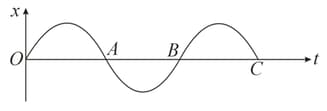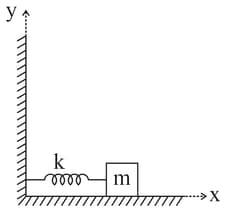EASY
Earn 100
What is the total energy in simple harmonic motion at the mean position ?
Important Questions on Oscillations
EASY
The variation of displacement with time of a particle executing free simple harmonic motion is shown in the figure.

The potential energy versus time plot of the particle is correctly shown in figure:
MEDIUM
MEDIUM
EASY
EASY
An object of mass is attached to a spring which is fixed at one end on a rigid support and the mass-spring system is kept on a frictionless table. The object is allowed to execute simple harmonic motion along - direction. The force constant of the spring is and the spring is stretched initially a distance of , the total energy stored in the system is

HARD
EASY
EASY
HARD
HARD
HARD
EASY
MEDIUM
EASY
EASY
MEDIUM
MEDIUM
MEDIUM
EASY
Total energy of a particle performing S.H.M. is NOT proportional to
MEDIUM

